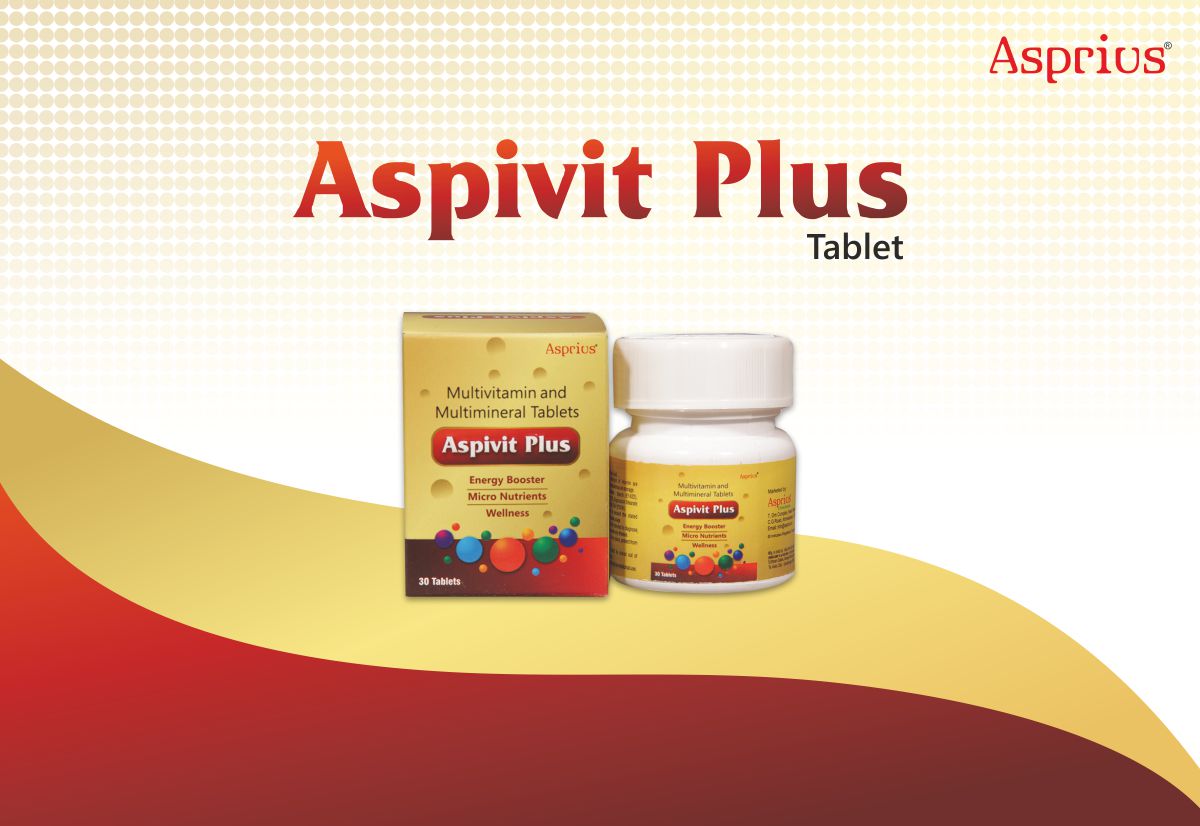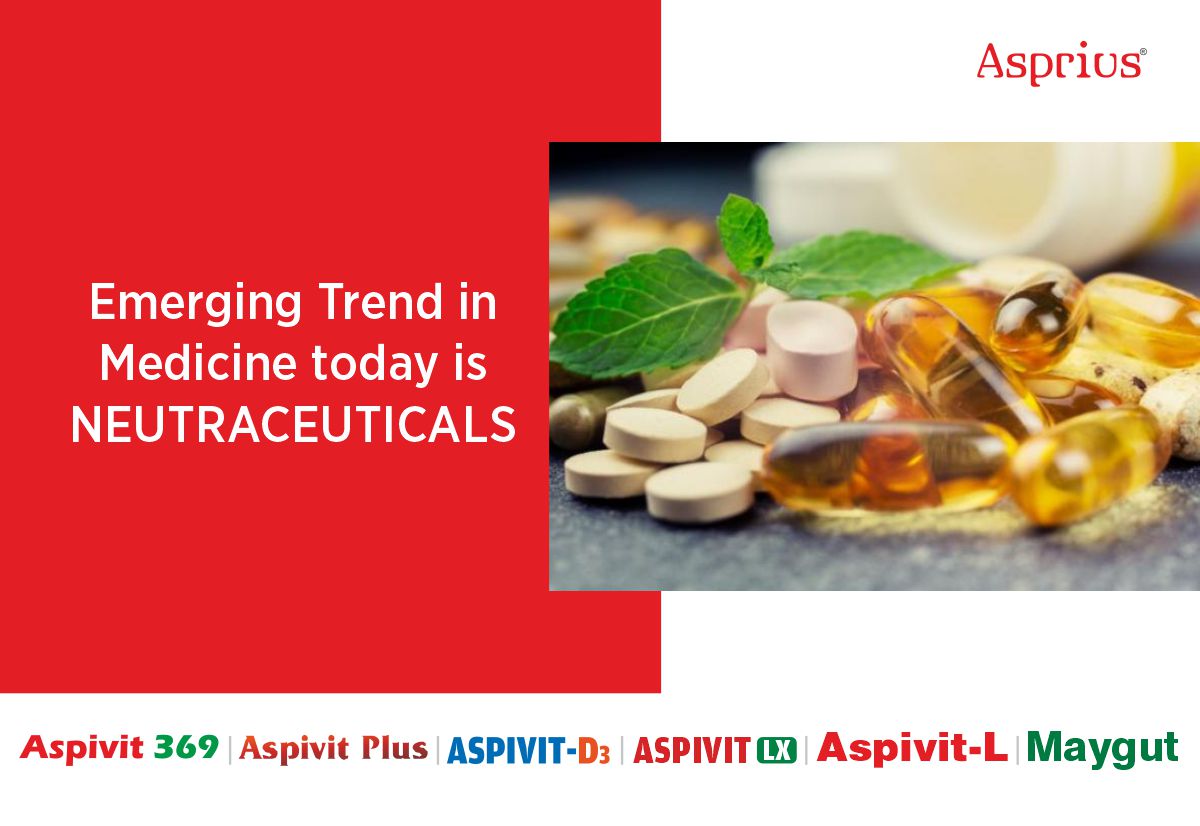
Dr. Sanjay Agrawal
Leading Pharmaceutical consultant and editor-in chief of IJMToday

Vitamin B: Are We Getting Enough of All Kinds?
To B or Not…
The fast pace of life has many deleterious effects on our life that have changed the basic science of our cells and tissues. The most noticeable is the effect on our diet and nutritional status particularly the micronutrients. Though the clear-cut deficiency disorders like scurvy are rarely seen today their place has been taken by more dangerous marginal nutritional deficiencies which result in impaired physical and mental developments and functions affecting the person’s performance. In many cases these deficiencies are not noticed in first instance until they lead to frank deficiencies but the abnormalities remain and in most of the cases their identification is too late to prevent the damage. The rise in stress and strain, increased pollution, and exposure to UV rays and deteriorated health habits have increased free radicals associated diseases particularly in the fields of cardiology, diabetology, dermatology and eye and psychiatric care. The role of nutraceuticals is emerging as a basic need of the hour to prevent these complications and maintain healthy life. The utmost attention and active participation is important from every person associated with healthcare particularly in most vulnerable conditions to cope up with increased requirements to prevent damages, maintain health and hasten recovery after chronic illnesses.
After all, we are what we eat! Research continues to prove that eating healthy food promotes good health and unhealthy food habits lead to a diseased body.
You definitely should. Without enough Omega –Fatty Acid (and folate), for example, you can become tired, weak, constipated, or depressed. And that’s just one of the kinds of vitamin B you need.
Omega fatty acids:
They belong to poly-unsaturated fatty acids. The important among them are n−3 fatty acids (or omega-3 fatty acids) and n−6 fatty acids (or omega-6 fatty acids). The word Omega refers to the methyl end of the molecule, and the number following indicates the position of the double-bond closest to that end of the chain.
Important nutritionally-essential n−3 fatty acids are: alpha-linolenic acid (ALA), eicosapentaenoic acid (EPA), and docosahexaenoic acid (DHA). The human body cannot synthesize n−3 fatty acids de novo, but it can form 20- and 22-carbon unsaturated n−3 fatty acids from the eighteen-carbon n−3 fatty acid, α-linolenic acid. These conversions occur competitively with n−6 fatty acids, which are essential closely related chemical analogues that are derived from linoleic acid. Both the n−3 α-linolenic acid and n−6 linolenic acid are essential nutrients which must be obtained from food. Synthesis of the longer n−3 fatty acids from linolenic acid within the body is competitively slowed by the n−6 analogues.
The n−6 to n−3 ratio:
Clinical studies indicate that the ratio of n−6 to n−3 fatty acids in diet is important to maintaining proper health. n−3 and n−6 compete for the same metabolic enzymes, thus the n−6:n−3 ratio will significantly influence the ratio of the ensuing eicosanoids (hormones), (e.g. prostaglandins, leukotrienes, thromboxanes etc.), and will alter the body’s metabolic function. Metabolites of n−6 are significantly more inflammatory (esp. arachidonic acid). In contrast eicosanoids made from n−3 fats are often anti-inflammatory rather than inflammatory. This necessitates that n−3 and n−6 be consumed in a balanced proportion. Healthy ratios of n−6:n−3 range from 1:1 to 4:1. Studies suggest that the evolutionary human diet, rich in nuts, seeds, grains, fruits and wild fish and meat may have provided such a ratio. In contrast typical Western diets provide ratios of between 10:1 and 30:1 – i.e., dramatically skewed toward n−6. This change in omega fatty acids consumption is one of the major contributors of many chronic diseases. This is important considering the balance of n-6 and n-3 in body tissues like the brain it is 1:1, in body fat it is 5:1 and in other body tissue it is 4:1.
Further, the conversion of ALA to EPA and then to DHA in humans is limited making the direct supplementation of EPA and DHA more important in deficiency states.
EPA and DHA: Health benefits-
Eicosapentaenoic acid and Docosahexaenoic are important omega-3 fatty acids in the body. They help balance the inflammatory omega-6 fatty acids and thus controls inflammation and limit the damages to the body. They are important in brain development, nervous system and retinal functions. They form the smooth lipid part of cell wall as organ wall structures and are important in maintaining proper elasticity of vascular structures. Their role in healthy lipid profile and atherosclerosis prevention has been proven clinically. They have positive effects on all parts of our body as they are important for formation of hormones and neurotransmitters in required amounts.
Many trials have correlated EPA and DHA deficiencies in different disorders. Several neurological/behavioral disorders have been suggested to be associated with depressed levels of DHA or DHA plus EPA combined. These include the neurological disorders of depression (including post-partum depression), Alzheimer’s disease, behavioral disorders such as Attention Deficit Hyperactivity Disorder (ADHD) and hyperactivity, as well as developmental coordination disorder. Chronic inflammatory conditions such as rheumatoid arthritis, certain skin disorders, gastrointestinal disorders (Inflammatory Bowel Disease, Crohn’s disease) have been found to be improved in a large number of studies to varying degrees with DHA plus EPA supplementation when added as a complementary intervention to standard pharmaceutical treatment regimens. Population studies have also revealed apparent benefits of consuming fish containing DHA plus EPA in a wide variety of conditions including chronic eye conditions (cataracts, dry eye), epilepsy, allergic sensitivity in very young children, pneumonia, lung/breathing capacity and chronic pulmonary disorders, plus other conditions recently reported including bone health, fibromyalgia, etc.
Cardiovascular disease:
The results of major clinical study in 11,324 patients with a recent myocardial infarction shows that 1 gram per day of n−3 fatty acids reduced the relative risk, risk of death and cardiovascular death and sudden cardiac death by 15%, 20% and 30% respectively. These beneficial effects were seen already from three months onwards.
Several studies published in 2007 have been more positive. In patients with unhealthy blood sugar levels 1800 mg daily of eicosapentaenoic acid reduced the thickness of the carotid arteries significantly along with improvement in blood flow.
Results of many studies have favoured the supplementation of EPA and DHA to reduce high blood pressure, correct abnormal lipid profiles and reduce cardiovascular morbidity and mortality.
Vitamin B6
Vitamin B6 (pyridoxine) serves as coenzyme and is involved in the metabolism of protein and carbohydrates, the production of insulin and red and white blood cells, and the synthesis of neurotransmitters, enzymes, and prostaglandins. Vitamin B6 is essential in numerous biochemical pathways involving red blood cells, the immune system, central nervous system function, protein metabolism, homocysteine metabolism, and also the production of energy. Pyridoxine is an especially important vitamin for maintaining healthy nerve and muscle cells and it aids in the production of DNA and RNA, the body’s genetic material. It is necessary for proper absorption of vitamin B12 and for the production of red blood cells and cells of the immune system.
Without enough of this B, you may get sick more often and feel depressed or confused. You may also get scaly, cracked lips. You only need a small amount of it each day, though, and most of us get that. If you want to make sure, your best bets are chickpeas, tuna, and — surprise — beef liver.
B1 (Thiamin)
Your body may not absorb enough of this if you often have more than a few drinks. Without it, you may have weakness, fatigue, and even brain damage. It can also lead to psychosis. So get your B1. Enriched rice, trout, and black beans are good sources.
B2 (Riboflavin)
Most Americans get plenty of riboflavin. That’s a good thing, because a serious lack of it can damage your liver and nervous system. For the most per bite, eat a big plate of beef liver. Can’t do it? Milk, yogurt, and beef are good second choices.
B3 (Niacin)
Niacin helps your digestion, skin, and nerves work the way they should. It also helps change food to energy. You can get it from milk, eggs, rice, and fish. But don’t overdo it. Too much can cause liver damage, peptic ulcers, and skin rashes.
B7 (Biotin)
A lack of B7 can lead to skin rashes, hair loss, high cholesterol, and heart problems. You can find it in cauliflower, salmon, carrots, bananas, soy flour, cereals, and yeast.
Folic Acid (Folate)
It belongs to a water-soluble vitamin B that occurs naturally in food. Folic acid is the synthetic form of folate that is found in supplements and added to fortified foods.
Folate helps to produce and maintain new cells. This is especially important during periods of rapid cell division and growth such as infancy and pregnancy. Folate is needed to make DNA and RNA, the building blocks of cells. It also helps prevent changes to DNA that may lead to cancer. Both adults and children need folate to make normal red blood cells and prevent anemia. Folate is also essential for the metabolism of homocysteine, and helps maintain normal levels of this amino acid.
Folate deficient women who become pregnant are at greater risk of giving birth to low birth weight, premature, and/or infants with neural tube defects. Folic acid is very important for all women who may become pregnant.
This is an important member of the B vitamin family — especially if you’re pregnant, because it can help prevent certain birth defects. Folic acid is the lab version of folate, which is naturally found in foods. Whip up some spinach and black-eyed peas to get some in your diet.
Vitamin C (Ascorbic Acid):
Vitamin C is a water-soluble vitamin and is important in forming collagen- a protein that gives structure to bones, cartilage, muscles, skin and blood vessels.
Vitamin C plays an important role as a component of enzymes involved in the synthesis of collagen and carnitine; It acts as a reducing agent to maintain the enzyme prolyl hydroxylase in an active form, most likely by keeping its iron atom in a reduced state. The hydroxylation of proline and lysine in procollagen is carried out by the enzyme prolyl hydroxylase using Vitamin C as a cofactor.
It also helps maintain capillaries, bones, and teeth and aids in the absorption of iron. Vitamin C is the most potent enhancer of non-heme iron absorption. A study showed that iron absorption from non-heme food sources can be increased significantly with a daily Vitamin C intake of at least 25 mg for each meal (estimated for 3 meals/day).
Vitamin C is a potent antioxidant because it can donate a hydrogen atom and form a relatively stable ascorbyl free radical. As a scavenger of reactive oxygen and nitrogen oxide species, Vitamin C has been shown to be effective against the superoxide radical ion, hydrogen peroxide, the hypochlorous acid and singlet oxygen.
Vitamin C protects folic acid reductase, which converts folic acid to folinic acid, and may help release free folic acid from its conjugates in food. Vitamin C facilitates the absorption of iron.
Severe deficiency of Vitamin C causes scurvy. Symptoms appear when the serum level falls below 0.2 mg/dl. The psychological manifestations of scurvy include depression and
Hysteria. This potentially fatal disease can be prevented with as little as 10 mg Vitamin C per day, an amount easily obtained through consumption of fresh fruits and vegetables.
Several symptoms of Vitamin C deficiency have been recognized including follicular hyperkeratosis, swollen and inflamed gums, loosening of teeth, dryness of the mouth and eyes, loss of hair and dry itchy skin. These symptoms reflect the role of Vitamin C in the maintenance of collagen and blood vessel integrity. Acute or chronic deficiencies characterize by hemorrhagic manifestations and abnormal osteoid and dentin formation.
Vitamin C plays important role in skin health. By the formation of collagen and elastin, it helps in maintaining skin elasticity and prevents wrinkles, sagging and skin ageing. Further its wound healing property makes it useful in wound management and inflammatory pruritic skin conditions. It has also been found to have role in skin pigmentation and scar prevention.
Vitamin C is normally deposited in the skin and is an essential part of the anti-oxidant brigade to protect skin against free radical assault from the atmosphere and from ultra violet light. Vitamin C plays a very important role in converting inactivated vitamin E back into an active anti-oxidant form of vitamin E and thus protects cellular membranes.
Vitamin C is widely distributed in nature, mostly rich in fresh fruits and leafy vegetables such as guava, mango, papaya, cabbage, mustard leaves and spinach. Most food–based dietary guidelines are similar in that all recommend consumption of 5 servings of fruits and vegetables daily. If this recommendation is followed, daily intake of Vitamin C will be 210 to 280 mg, depending on food content factors.
Vitamin C is the least stable of all vitamins and is easily destroyed during processing and storage. Exposure to oxygen, prolonged heating in the presence of oxygen, contact with minerals (iron and copper) and exposure to light are destructive to the Vitamin C content of foods.
Bioavailability, nutrient-nutrient interactions, gender and antioxidant protection are important factors affecting Vitamin C requirement.
Methylcobalamin
Vitamin B12 also called cobalamin is largest among all the B complex vitamins. These are the essential vitamins that are not synthesized in body so taken through food mainly through non vegetarian food like fish, meat, egg, dairy products etc. vitamin B12 is one of the important neutraceuticals and mainly used in treatment of various diseases like megaloblastic anaemia, cyanide poisoning, vitamin B12 deficiency and many more. These are water soluble and contain four cobalt centred pyrrole rings. Based on replacement of adenocyl ligand by various groups the cobalamin is of four types such as Cynocobalamin, Hydroxocobalamin, methylcobalamin and adenocylcobalamin. Methylcobalamin or mecobalamin is active form of vitamin B12. It is very important for nerve protection by making myelin sheath, RBC production and DNA synthesis. This is approved drug for treatment of Peripheral neuropathy, Diabetic neuropathy, amyotrophic lateral sclerosis.
Utility or uses of Methylcobalamine:
- Peripheral Neuropathy- Intramuscular injection of methylcobalamine is very effective in chemotherapy induced peripheral neuropathy. Use of oxiplantin, paclitaxel in cancer treatment can cause pain, numbness and tingling in extremities and slow nerve conduction. Metylcobalamin causes methylation reaction in synthesis of myelin protein which is protective in nerve fibers.
Ii. Diabetic Neuropathy- physiological conditions like diabetes are associated with neurological damage. Methylcobalamine protects nerves from further damage and restores structure and function of nerve fibres. Methylcobalamin can cross BBB and reaches to brain. It helps to repair nerve fibres by nerve protein, form myelin sheath, stimulate regeneration of nerves and restore vital function.
iii. Analgesic- The analgesic effect of methylcobalamine is seen to treat neuralgia, neck pain, low back pain, trigeminal neuralgia, peripheral neuropathy etc. It improves nerve conduction, promote nerve regeneration, and inhibit ectopic spontaneous discharge.
- Hyperhomocysteinemia – mecobalamin lowers the plasma homocysteine level by converting it to methionine and prevents many diseases.
- Pernicious anaemia- it is autoimmune disease caused vitamin B12 deficiency due to decrease in intrinsic factor (Transcobalamin II) production in gastric parietal cells. Parenteral administration of methylcobalamine treats deficiency.
- Other uses: Methylcobalamin is used in very different diseased conditions such as Megaloblastic anaemia and Vitamin B12 Deficiency, Osteoarthritis, Amylotropic lateral sclerosis, Glutamate induced neurotoxicity and it is effective in cognitive function and Alzheimer disease syndromes




